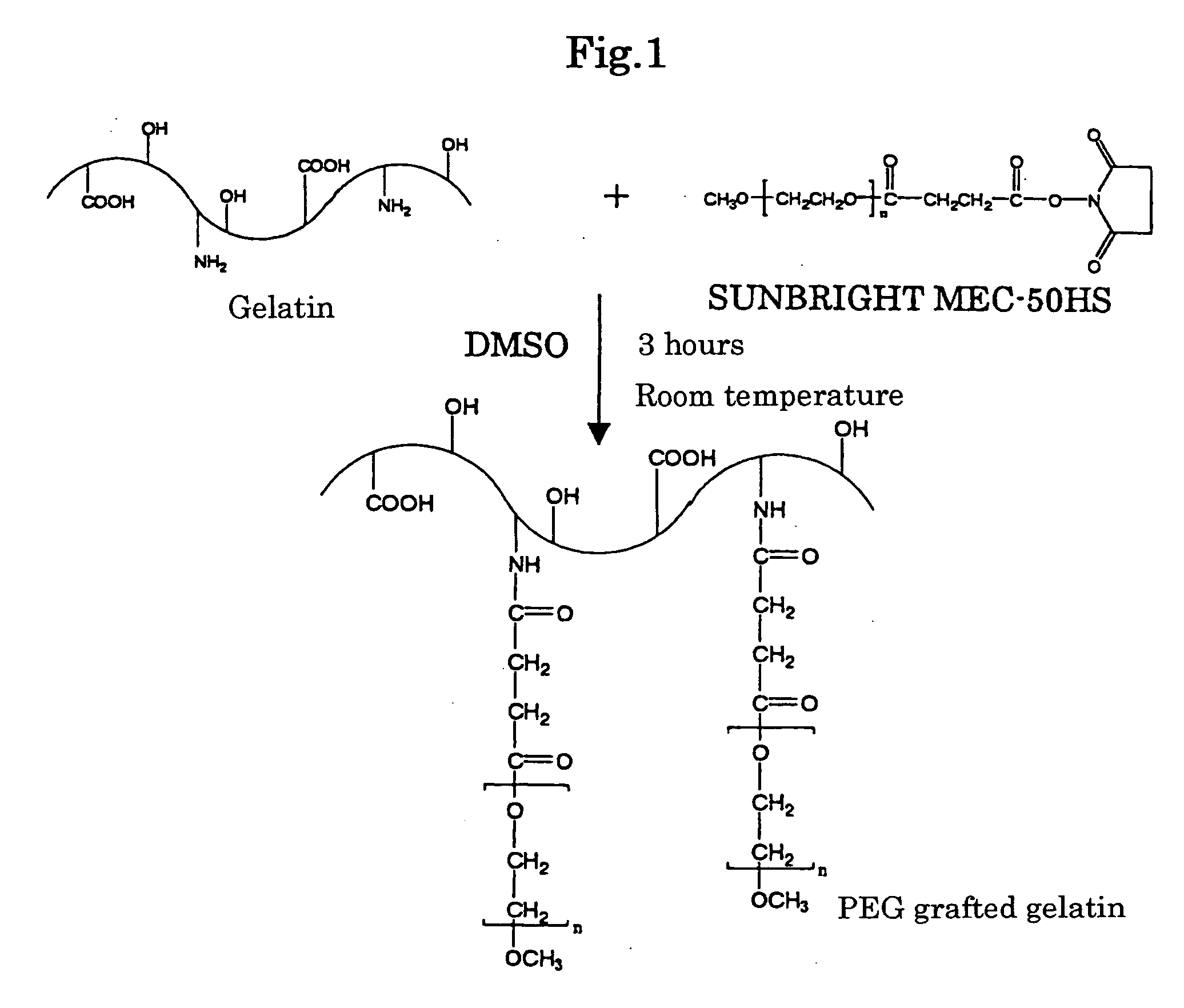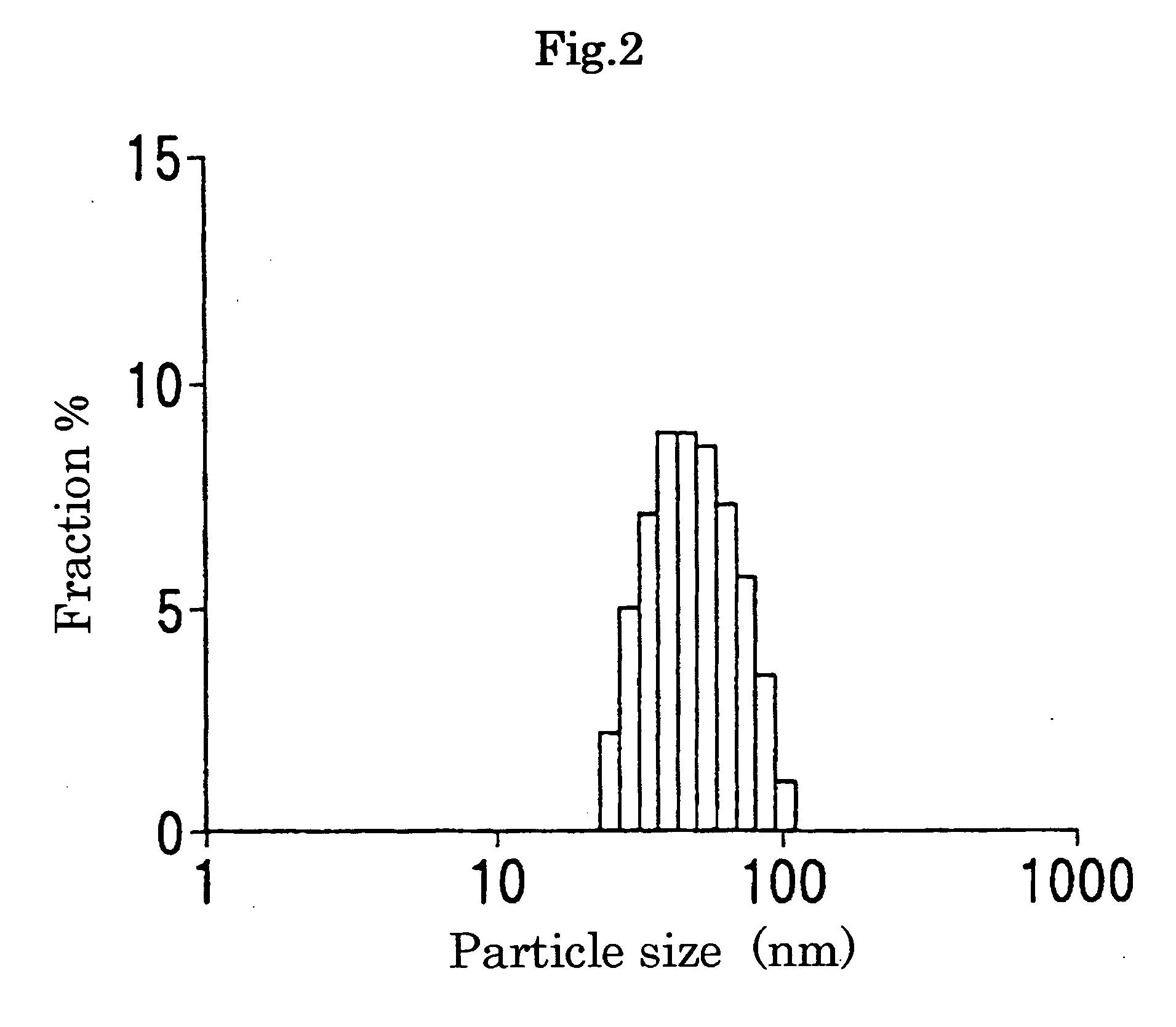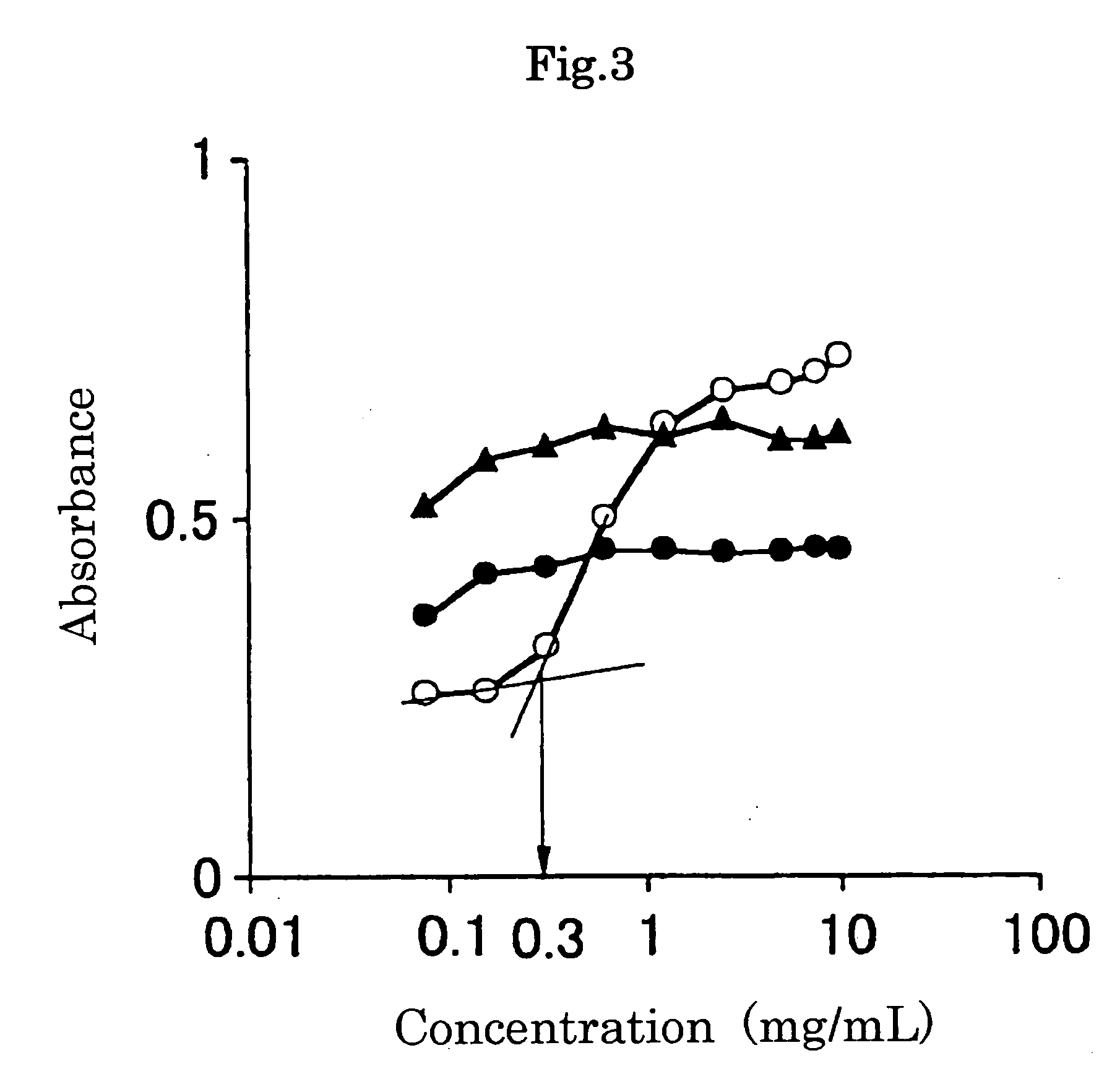Gelatin derivatives and high-molecular micelle comprising the derivatives
a technology of gelatin and micelle, which is applied in the field of gelatin derivatives and high-molecular weight micelles comprising the derivatives, can solve the problems of difficult control of sustained release patterns, difficult to perform the formation of sustained release functions of water-soluble drugs over 3 or more days, and difficult to perform the formation of sustained release of drugs
- Summary
- Abstract
- Description
- Claims
- Application Information
AI Technical Summary
Benefits of technology
Problems solved by technology
Method used
Image
Examples
example 1
Preparation of Gelatin Derivative Grafted with PEG
[Experimental Method]
[0091] Gelatin (manufactured by Nitta Gelatin Co., Ltd; derived from beef bones; molecular weight 100000; isoelectric point 5) was dissolved in dimethylsulfoxide (DMSO) so as to prepare a gelatin solution of a concentration of 10% (w / w). Further, methoxy polyethylene glycol succinimidyl succinate: SUNBRIGHT MEC-50HS (manufactured by NOF CORPORATION; molecular weight 5330) was dissolved in DMSO. The concentration of SUNBRIGHT MEC-50HS was two-fold mols of that of the amino group present in the gelatin. DMSO was previously dehydrated using molecular sieve 3A and submitted to use.
[0092] 10 ml of the solution of SUNBRIGHT MEC-50HS was added little by little to 10 ml of the gelatin solution with stirring and reacted at room temperature for 3 hours. The synthetic scheme was shown in FIG. 1.
[0093] After the reaction, the reactant was dialyzed in ultra pure water using a cellulose tube (fractionation molecular weight...
example 2
Evaluation on PEG-Grafted Gelatin
[Experimental Method]
[0094] With regard to the PEG-grafted gelatin prepared in Example 1, determination of amino group was carried out to evaluate the ratio of grafting SUNBRIGHT MEC-50HS to the gelatin.
[0095] The determination of amino group was carried out by the TNBS method. Namely, using an isotonic phosphate buffer with a pH of 7.4, 1 ml of a 4% (w / v) aqueous sodium hydrogen carbonate solution was added to 1 ml of the aqueous PEG-grafted gelatin solution having a concentration of 0.5 mg / ml. Further, 1 ml of 0.1% (w / v) sodium 2,4,6-trinitrobenzenesulfonate (TNBS) was added and subjected to reaction at 40° C. for 2 hours. After the reaction, the absorbance of a resulting yellow-colored aqueous solution was measured at a wavelength of 415 nm. Using β-alanine as a standard specimen, a calibration curve was made and the grafting ratio was determined from the calibration curve.
[Results]
[0096] With regard to the gelatin and the prepared PEG-grafte...
example 3
Preparation of PEG-Grafted Gelatin Micelle
[Experimental Method]
[0098] The PEG-grafted gelatin prepared in Example 1 was dissolved in an isotonic phosphate buffer with a pH of 7.4 so as to prepare a 10 mg / ml gelatin solution and then the resulting solution was subjected to ultrasonic treatment (10 μA) for 5 seconds using a probe type sonicator to prepare a transparent micelle solution.
PUM
| Property | Measurement | Unit |
|---|---|---|
| grain diameter | aaaaa | aaaaa |
| size | aaaaa | aaaaa |
| particle diameter | aaaaa | aaaaa |
Abstract
Description
Claims
Application Information
 Login to View More
Login to View More - R&D
- Intellectual Property
- Life Sciences
- Materials
- Tech Scout
- Unparalleled Data Quality
- Higher Quality Content
- 60% Fewer Hallucinations
Browse by: Latest US Patents, China's latest patents, Technical Efficacy Thesaurus, Application Domain, Technology Topic, Popular Technical Reports.
© 2025 PatSnap. All rights reserved.Legal|Privacy policy|Modern Slavery Act Transparency Statement|Sitemap|About US| Contact US: help@patsnap.com



